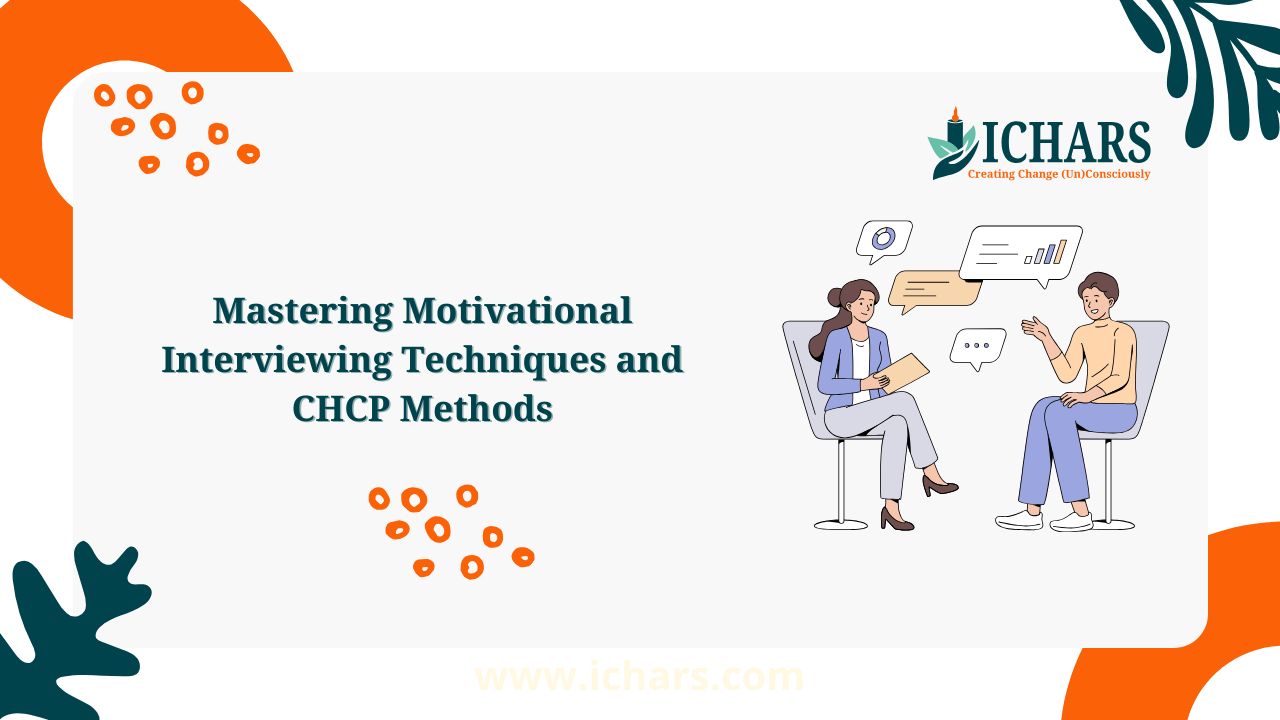Introduction
In the realm of therapy and counseling, the integration of various techniques and approaches often leads to more effective outcomes for clients. One such powerful integration is between motivational interviewing and Cognitive Hypnotic Psychotherapy (CHP). This article delves into the nuances of both techniques and explores how they can be synergized to enhance therapeutic interventions.
Definition of Cognitive Hypnotic Psychotherapy (CHP)
Cognitive hypnotic Psychotherapy is a unifying approach to psychotherapy that uses Hypnosis as a foundation for seamlessly integrating:
- Advanced Coaching and Interview Frameworks
- SOFT SEA®
- PROS Relationship
- with different Psychological Approaches
- Cognitive
- Behavioural
- Humanistic
- Psycho-Dynamics
- and Transformational Techniques from
- Hypnosis (Conversational and Clinical)
- Neuro Linguistic Programming
- Mindfulness and Meditation
- Metaphors and Stories
- Spiritual Healing practices
- and more…
It focuses on empowering individuals to recognize and change unhelpful patterns of thinking, feeling, and behaving.
Importance of Motivational Interviewing in Therapy

Motivational interviewing is a client-centered, directive method for enhancing intrinsic motivation to change by exploring and resolving ambivalence. It emphasizes empathy, collaboration, and evocation, recognizing that the motivation for change is elicited from within the individual.
Preview of the Integration of Motivational Interviewing within CHP
The integration of motivational interviewing and CHP presents a powerful approach to therapy that combines the strengths of both techniques. By incorporating motivational interviewing techniques and principles into CHP sessions, therapists can effectively engage clients, evoke their intrinsic motivation for change, and facilitate lasting transformation.
Understanding Motivational Interviewing
-
Core Principles and Goals
Motivational interviewing is grounded in four core principles: expressing empathy, developing discrepancy, rolling with resistance, and supporting self-efficacy. Its primary goals include eliciting and strengthening motivation for change, identifying and resolving ambivalence, and supporting clients in making informed decisions about their behaviour.
-
The Role of Empathy and Collaboration
Empathy and collaboration are fundamental to motivational interviewing techniques. Therapists demonstrate empathy by actively listening to clients, understanding their perspective, and communicating genuine care and concern. Collaboration involves working together with clients as partners in the change process, respecting their autonomy and expertise.
-
Techniques Used in Motivational Interviewing
Motivational interviewing employs various techniques to facilitate behaviour change, including open-ended questions, reflective listening, affirmations, summarizing, and eliciting change talk. These techniques aim to explore clients’ motivations, values, and goals, amplify their intrinsic motivation for change, and resolve ambivalence.
The Fundamentals of Cognitive Hypnotic Psychotherapy
-
Overview of CHP’s Integrative Approach
CHP adopts an integrative approach that draws from multiple therapeutic modalities to address the complex needs of clients. It combines cognitive restructuring techniques from CBT, hypnotic inductions and suggestions from hypnotherapy, linguistic patterns from NLP, and mindfulness practices to facilitate cognitive and behavioural change.
-
How CHP Combines Various Therapeutic Models
By integrating diverse therapeutic models, CHP provides a flexible and comprehensive framework for addressing a wide range of psychological issues. It emphasizes the interplay between thoughts, emotions, behaviours, and beliefs, offering tailored interventions to suit individual client needs and preferences.
-
The SOFTSEA Framework and Its Application
The SOFTSEA framework is a foundational model in CHP that guides therapists in structuring therapy sessions and interventions. It stands for Current Situation, Desired Outcome, Future, Tasks, Suggestion, Evaluation and Assignment, representing key elements of the therapeutic process.
Therapists use this framework to deliver suggestions, observe client responses, provide feedback, induce trance states, create psychological space, explore emotions, and establish associations for change.
Synergizing Motivational Interviewing Techniques with CHP Techniques
-
Building Rapport
Before delving into therapeutic questions, it’s crucial to establish trust and rapport with the client. This is achieved through various techniques in Cognitive Hypnotic Psychotherapy (CHP). Building rapport involves creating a safe and welcoming atmosphere where the individual feels valued and understood.
CHP techniques like pacing and leading, which involve attuning to the client’s emotional state and communication style, help build trust and rapport by meeting clients where they are. Additionally, mirroring the client’s body language and maintaining open and non-threatening body language are integral in establishing rapport.
-
Utilizing Open-Ended Questions
Open-ended questions are a fundamental tool in both motivational interviewing and CHP. These questions invite clients to share their thoughts, feelings, and experiences in-depth, fostering a rich and open dialogue.
By initiating the conversation with open-ended questions, therapists can uncover valuable insights, motivations, and perspectives that form the basis of effective questioning for constructive discussions and positive change.
-
Practicing Effective and Reflective Listening
Reflective listening, another key aspect of both motivational interviewing and CHP, involves actively responding and reflecting back on what the client is saying. This technique demonstrates a deep level of engagement and empathy, making the individual feel heard and understood.
By actively listening and reflecting their thoughts and feelings, therapists reinforce their commitment to understanding the client, fostering a sense of trust and openness in the therapeutic relationship.
-
Incorporating Acknowledgments and Change Talk
Acknowledging a client’s responses and achievements reinforces their self-belief and resilience, which are crucial in both motivational interviewing and CHP.
Eliciting change talk, or encouraging clients to express their own reasons and commitment to change, is another pivotal aspect of motivational interviewing that can be integrated into CHP sessions.
These techniques not only strengthen clients’ resolve but also deepen their engagement in the therapeutic process, making them more receptive to positive transformation and taking ownership of their goals.
-
Applying Scaling Questions and Cost-Benefit Analysis
Scaling questions, which allow clients to assess and express their readiness and confidence levels in making a desired change, and cost-benefit analysis, which explores the pros and cons of change, are valuable tools in motivational interviewing that can be applied within the framework of CHP.
These techniques empower clients to reflect on their motivations and readiness for change, guiding them toward actionable steps and making their path to change more tangible and achievable.
-
Ensuring Clarity through Summarizing and Clarifying
Summarizing and clarifying are essential elements of effective communication in both motivational interviewing and CHP. Periodically summarizing the conversation helps ensure that both parties have a clear and accurate understanding of the discussion’s key points.
This process demonstrates the therapist’s commitment to understanding the client on a deep level, fostering a collaborative and trust-based relationship where clients feel valued, heard, and genuinely understood.
-
Promoting Autonomy and Empowerment
Respecting an individual’s autonomy and empowering them to take ownership of their decisions and actions is a fundamental principle in both motivational interviewing and CHP. By honoring clients’ autonomy, therapists create a supportive and collaborative environment where clients feel empowered rather than coerced or judged.
This approach fosters a sense of responsibility, self-determination, and self-efficacy, crucial factors in motivating and sustaining positive change.
-
Facilitating Transformation through Metaphors and Task Lists
Using transformational metaphors and task lists, therapists in CHP help clients dig deeper to know and understand themselves better. By pointing out discrepancies between clients’ goals and current behaviours and guiding them through reflection, therapists facilitate transformation and ensure that goals are achievable.
Conclusion

In conclusion, mastering motivational interviewing techniques within the context of Cognitive Hypnotic Psychotherapy offers a holistic and integrative approach to facilitating behaviour change and promoting psychological well-being.
By synergizing the strengths of motivational interviewing and CHP, therapists can empower clients to unlock their potential, overcome obstacles, and create positive transformations in their lives. Through ongoing training, practice, and collaboration, therapists can enhance their skills and effectiveness, ultimately leading to improved outcomes for both clients and therapists alike.

